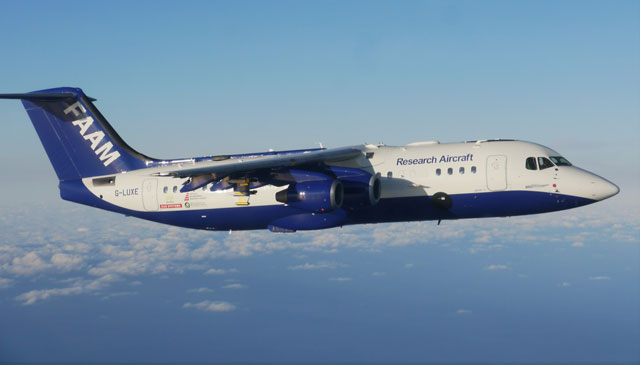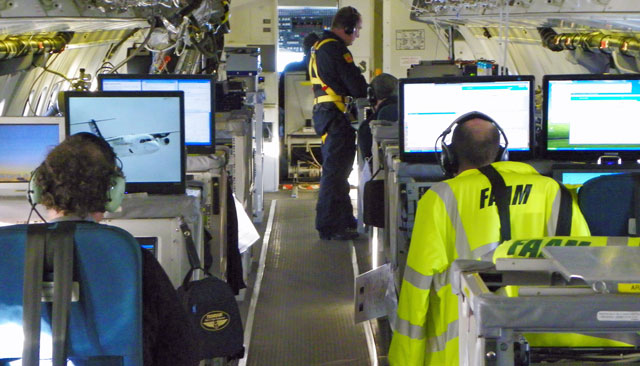BAE Systems' BAe 146 Atmospheric Research Aircraft has started another tour of duty within the Arctic circle to gather data that will improve predictions about the region's future climate.
This latest campaign - known as Aerosol Cloud-Coupling and Climate Interactions in the Arctic - consists of a team of scientists from the British Antarctic Survey, the UK Met office and four UK universities. The team is seeking to better interpret current climate change science by improving understanding of how clouds and aerosols in the Arctic atmosphere influence its climate in particular - and the global climate in general.
The BAe 146 ARA is based at Kiruna in northern Sweden. From here it will make a 2.5h flight to Longyearbyen airport - the world's northernmost airport - on the Norwegian island of Svalbard in Arctic Circle. "A total of 70h of scientific, test and transit flying is planned [over three weeks]," says BAE Systems.
 |
|---|
 |
BAe Systems |
The BAe 146 ARA has undergone more than 20 configuration alterations since entering service as a research tool in 2004, says BAE. The four-engined aircraft was a 100-seat passenger type, but has been specially adapted to carry up to 18 scientists working on 15 mission equipment racks and scientific consoles, it adds.
For this latest campaign, engineers at BAE's Prestwick, Scotland facility have installed a new wing pylon canister instrument for the detection of cloud droplets ranging from 2-75 micron by laser-initiated scattering principles.
The BAe 146 ARA will fly above, in and below clouds, taking measurements of cloud microphysical properties and dropping dropsondes - weather sensors carried by parachute - over the open ocean, the ice edge, the marginal ice zone and solid ice.
The aircraft will work alongside and co-ordinate its measurements with a British Antarctic Survey de Havilland DHC-6 Twin Otter research aircraft, that will be used mainly for low-level runs to measure near surface fluxes.
Researchers will use the data gathered to measure cloud processes that directly affect the surface of the earth, and the sources of aerosol - sea-spray and particles derived from the oxidisation of DMS (a gas emitted by marine plankton) - that control cloud microphysical properties.
By better understanding the relationship between clouds, aerosol, sea ice and the wider Arctic climate system, the scientists hope to be able to make improved predictions for the future Arctic climate.
Source: Flight International























